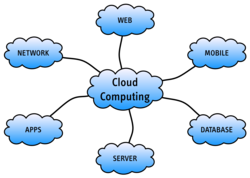Virtualization is decisive for the success of SAP clients

Whereas in the past, the development and operation of IT infrastructures were primarily realized through the maintenance and new procurement of physical resources, today a consolidation strategy prevails – virtualization being the magic word. Thereby, not only operation costs are reduced, since virtualization concepts are a basic requirement for Cloud Computing.
Since up to now, extensions of IT infrastructure have primarily been conducted by means of new physical resources, the infrastructures of enterprises and computing centers have developed into large and complex landscapes. Jörg Hesske, County Manager at VMware Germany, states that, since the available technologies have been constantly advanced, enterprises and computing centers have often operated a multiplicity of heterogeneous systems whose degree of capacity utilization merely often is between 5% and 15%. Resulting problems are the high costs for the maintenance of the infrastructure as well as the high operating costs.
Server Virtualization
Virtualization is a term that is used in the context of computer science and business informatics for the centralization or fragmentation of physical resources into virtual resources. Nevertheless, due to the multiple possibilities of virtualization, a consistent definition is not possible.
Especially for the operation of computing centers/for the consolidation of the IT-infrastructure, the server-virtualization plays a decisive role. This generally refers to the isolation of the applied resources from the physical existing resources. Thus, the interdependence between the applied components is repealed. The potential of the virtualization concepts is correspondingly high.
Increasing resource utilization and flexibility
The expectations towards virtualization are correspondingly high. Clients hope that the virtualization of their infrastructure will cause lower operating costs and higher flexibility. Furthermore, increased availability is among the advantages of virtualization. VMware for example found that the degree of capacity utilization of their customer server could be increased from 5%-15% to 60%-80%, which is a vast improvement.
Operators are thus able to reduce their costs considerably: less physical resources, less power consumption, etc. An additional advantage virtual resources have over physical resources is their high degree of flexibility concerning size and efficiency: both of them are dynamically adaptable, often even during operation. The virtual resources always create a convenient virtual hardware environment, which, according to the requirements of an application, can be configured in a quick and flexible way.
Risks of virtualization
As with general consolidation scenarios, server consolidation with application of virtual machines also requires a careful planning and monitoring of the operational deployment. The condensed usage brings about less tolerance for deficiency. If a system fails in classic operation or works slowly due to a shortage of performance, only this single system will be affected. Through server virtualization, the deficiency of a physical server implies the deficiency of all virtual servers on this unit. It is crucial to calculate this risk in advance and to actively control it by means of accurate planning and selected technical redundancies.
This also applies to the correct size allocation of application environments, the so-called “sizing”, that is common in the SAP environment. Virtualization can support this step by means of the isolation of infrastructure and operation mentioned above, but it cannot replace it. The knowledge of the concrete operational scenario (number of users, expected data throughput, classification of the system) is also necessary for the smooth operation in virtual environments.



